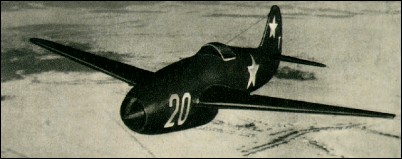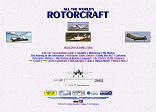 |
Yakovlev Yak-151946 |  |
| FIGHTER | Virtual Aircraft Museum / USSR / Russia / Yakovlev |
 |
Flown for the first time on 24 April 1946, just three hours after the Mikoyan-Gurevich OKB's I-300 (MiG-9), the Yak-15 was to achieve the distinction of being one of only two service jet fighters in aviation's annals to have been derived from a piston-engined service fighter (the other being the Swedish Saab 21R). Primarily the responsibility of Yevgenii Adler and Leon Shekhter, development of the Yak-15 began in May 1945, the all-metal second-generation Yak-3 airframe being used as a basis and enabling the first of three prototypes to be completed in the following October. Taxying trials and short "hops" were performed, but flight testing was delayed while the possibility of the jet efflux attaching to the fuselage at high incidences was explored in the TsAGI T-101 full-scale wind tunnel. The Yak-15 retained most of the wing, rear fuselage, tail and undercarriage of the Yak-3, a new fuselage nose housing a Junkers Jumo 004B turbojet being introduced, and the main-spar being arched over the jetpipe. The Yak-15 was demonstrated over Tushino during Aviation Day on 18 August 1946, and two days later, on 20 August, the NKAP (People's Commissariat for the Aircraft Industry) issued a directive that 12 additional aircraft be built to participate in the October Revolution Parade to be held on the following 7 November, 80 days later. Produced by hand, the first of these flew on 5 October and the last in time to participate in the Parade, which, in the event, was cancelled because of inclement weather. State Acceptance testing was completed in May 1947, and, despite being structurally limited to Mach=0.68 below 3200m, the Yak-15 was ordered into production at GAZ 153 as an interim type. One of the pre-series Yak-15s had meanwhile been adapted as a tandem two-seat conversion trainer under the designation Yak-21. The series Yak-15 carried an armament of two 23mm NS-23 cannon and was powered by a Jumo 004B turbojet which had been adapted by I F Koliesov of the Lyulka bureau for manufacture at Kazan as the RD-10 with a rating of 892kg. Production gave place late in 1947 to the Yak-17 after completion of 280 Yak-15s. Max speed, 435 mph (700km/h) at 8,200 ft (2 500 m), 500 mph (805km/h) at 16,405 ft (5 000 m). Time to 16,405 ft (5 000 m), 4.8 min. Max range, 317mls (510 km). Empty weight, 5,1811b (2 350 kg). Loaded weight, 6,0291b (2 735kg). Span, 30 ft 2V4in (9,20m). Length, 28 ft 6V2 in (8,70 m). Height, 7 ft 5Vs in (2,27m). Wing area, 159.85 (14,85m2). Yakovlev Yak-15 on YOUTUBE

|  COMPANY PROFILE | ||||||||||||||||||||||||||||||||||||||||||||||||
 |

|

